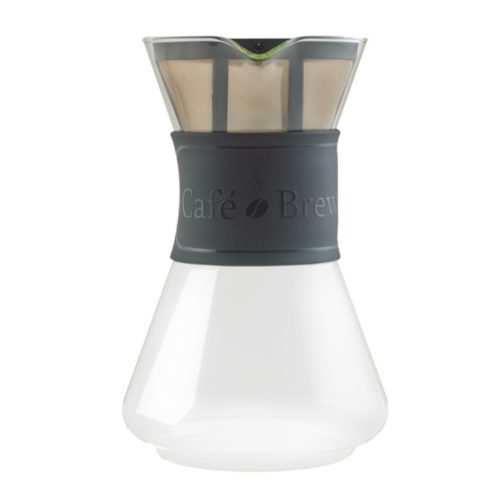12 Jan How To Measure Loose Leaf Tea For Brewing at Home
Steeping loose leaf tea produces a premium brew because the leaves are free to unfurl in a way that creates a more flavorful cup. Of course, one common question often arises when brewing loose leaf tea: What ratio of tea and water should you use? Without a pre-filled teabag, you’ll have to find the right measurement yourself.
Cafe Brew has put together a simple guide on how to help you brew the perfect cup of loose leaf tea. Let’s take a look!
Professional Tea Cupping Standards
The tea industry has established cupping standards to ensure consistency among tea tastings. Cuppings are simply formal ways of tasting tea, and having a standard ratio prevents beverages from having inconsistent flavors simply because they were brewed differently. When all teas are made the same way, professional tea tasters can accurately identify variances in the leaves themselves.
The industry standard is to use two grams of tea per eight ounces of hot water. Although the ideal water temperature varies depending on the type of tea being made, the ratio of leaves to water doesn’t. Black, green, white, oolong, herbal, and blended teas are all professionally cupped with this ratio.
This standard measurement isn’t just for sommeliers – it can be used at home with any tea brewing method. Even though there’s a set way to conduct a tea cupping, the ratio works regardless of whether you’re using a single-cup tea infuser, tea bag filters, or a loose leaf tea filter with a tea filter clip.
Adjusting for Your Personal Tea Brewing Taste
Of course, you don’t have to follow the professional cupping standards. The ratio was established to ensure consistency, but it doesn’t necessarily produce every person’s ideal cup of tea. Some prefer a more potent form of tea brewing, while others like their beverage to be a little weaker than what this measurement produces.
The standard ratio is a good place to start, and you can adjust it to create your own personal mix according to your taste preferences. This requires testing your tea and identifying what you’re tasting to determine the necessary changes. There are a few different adjustments you can make, depending on what you taste:
- Astringent – Astringency is a common characteristic of many teas that refers to a sharp flavor. If a cup of tea is too astringent, you may opt for a different variety (e.g., green instead of black) or adjust the tea brewing process. To reduce astringency, try steeping the loose leaf tea leaves for a shorter time or in slightly cooler water.
- Bitter – Bitterness is a sign that tea has been over-extracted. To avoid this, steep the loose leaf tea leaves in cooler water or for less time.
- Flat – Tea that tastes flat or dull isn’t necessarily weak; rather, it lacks complexity and nuanced flavors. This could be a result of the tea itself, or your tea brewing may be under-extracted. Try brewing the tea a little longer or with slightly hotter water, and see what happens.
- Strong – Strong tea doesn’t have any undesirable astringent or bitter flavors. Instead, it simply has a lot of flavor in the cup. If a tea is too strong, reduce your ratio slightly. You can either use fewer leaves or more water to do so.
- Weak – Weak tea is characterized by a watered-down taste. Often, it will feel more like drinking hot water than infused tea. To make the tea a bit stronger, increase the leaves to water ratio.
Ultimately, you should follow your taste and experiment with different tea brewing parameters. Adjust one variable at a time, and see what combination of steeping time, water temperature, and ratio produces the cup of tea that you like best.
Adjusting your Tea Brewing for Your Available Supplies
Using a weight-based ratio will produce a more consistently accurate brew than a volume-based method because the density of tea leaves varies. However, many people don’t have a kitchen scale readily available at home, and it’s often easier to use a spoon for a volume-based measurement. If you prefer this method, keep in mind that two grams of tea roughly equates to one teaspoon. Try brewing with one teaspoon of tea per eight ounces of water, and make adjustments accordingly after your first cup.
Additionally, it’s important to remember that not all teacups are eight ounces. Many teacups are only six ounces, and a lot of mugs are either 12 or 16 ounces. Adjusting the ratio for a differently sized cup requires just a little math:
- One and a half grams (0.75 teaspoons) tea for six ounces of water
- Three grams (one and a half teaspoons) tea for eight ounces of water
- Four grams (two teaspoons) tea for 12 ounces of water
Make Loose Leaf Tea Like an Expert
The ratio of tea to water that you use when brewing loose leaf tea is only one variable that impacts how your cup of tea tastes. The equipment you have on hand can also alter the outcome of your brew. From carafes to glass whistling tea kettles, Café Brew has everything you need to upgrade your brewing experience.
Contact us today for more information about how to brew and steep tea at home!
 Pour Over Coffee Maker, 8 Cup Glass (#PO108-BL)
Pour Over Coffee Maker, 8 Cup Glass (#PO108-BL)





Sorry, the comment form is closed at this time.